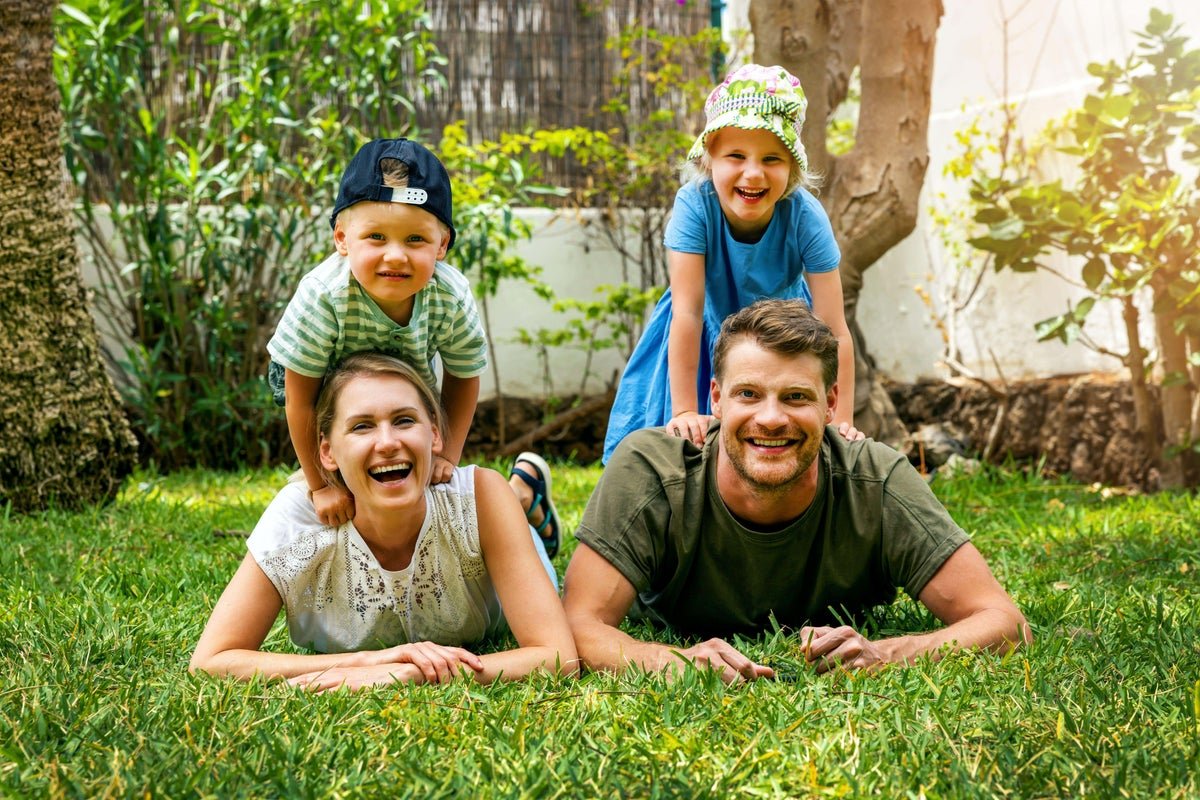As the summer holidays approach and children and pets venture out increasingly on to your lawn, sometimes you might wonder if there will be any grass left by autumn.
Toys, trampolines, sandpits and paddling pools so often take up significant sections of the garden, leaving your lawn trampled and suffocated.
But you can take steps to minimise the damage, says Kate Turner, horticulturist for Evergreen Garden Care, who has worked behind the scenes on BBC Gardeners’ World, Love Your Garden and Garden Rescue.
View this post on Instagram
“The biggest obstacles are kids with trampolines and paddling pools. All the toys come out and they stay on the lawn. You might go on to websites which say ‘Move your trampoline every day’ but that’s just not realistic.
“So we have to accept that during the summer just enjoy your lawn, don’t get too upset about it.”
However, there are things you can do to minimise the damage, she suggests.
1. Be waterwise
“If there isn’t a hosepipe ban and you want to water the lawn, give it a deep soak one evening a week, or early morning if you’re an early riser,” she advises.
“But the lawn is the most hard-wearing plant in your garden. So even if the dry weather continues, once the autumn rain comes, usually the lawn will bounce back.”
2. Let your grass grow longer
Over the summer, don’t mow your grass as frequently and if it goes brown stop mowing it completely, she advises.
“If you’re not mowing the lawn, get the edges done because that makes the garden look so much smarter,” she suggests.
3. Sink your trampoline
View this post on Instagram
“If you have young kids and you are going to have that trampoline for a few years, think about getting a sunken trampoline, because it’s much safer,” she suggests.
“Dig a hole and line it with a weed membrane. You can get specialist companies that do it.”
Once the hole has been dug, overseed the perimeter with a really hard-wearing shade-tolerant lawn seed, she advises.
“Now is a really good time to do it because the soil is warm. Rake over the area a bit, then throw some good hard-wearing drought-tolerant and shade-tolerant seed. You have to be prepared to water for the first few weeks.”
Obviously you’re not going to be able to move the trampoline once it is in, but at least when the children leave home you have a ready-made space for a wildlife pond, she adds.
4. Put up with the paddling pool
“There’s not a lot you can do until after (summer), but get a ground sheet down first and put the pool on top of that,” she advises. “If there’s any stones or pebbles underneath the soil level it will stop it puncturing.”
You could also make a feature of it, creating a path that leads to the paddling pool, which can reduce the mess around it, she adds.
Once the season is over, use the pool water to water your lawn. Rake the area a little and then overseed some more to refresh the grass.
If you have enough space and a small-enough paddling pool, move it once a week to give each area of lawn a break, she suggests.
5. Guard against football damage
If you have a family of keen budding footballers, overseed the goal area now with hard-wearing seed – and you will need to water it until it starts to germinate – to help minimise damage later on in the summer, she advises.
“If you’re not going to overseed because you already have a decent lawn, give it a slow-release feed to toughen it up.”
However, like Wimbledon courts at the end of the tennis tournament, if that goal is in constant use over the summer you’ll have to accept that it may be trashed during those months.
6. Feed regularly
View this post on Instagram
“You can give the lawn a really good feed every six weeks and once we are into the summer proper, use something like a fast-acting green, which you can attach to your hose, spray it on and it greens the grass up and makes it stronger really quickly.”
If there’s a drought, don’t use feeding granules, she advises, but go for a liquid feed because granules will need a lot more watering to dissolve and do the work.
7. Make a path
View this post on Instagram
Well-worn areas can soon appear on your lawn if you don’t have a path, so create a simple pathway using, for instance, log edging and bark chip, she suggests.
“If you have kids, you could do a hopscotch effect with different pavers and put some plants in between them such as low-growing thyme and chamomile. Something temporary for the summer is a really good idea.”
8. Reduce pet damage
“Female dogs’ wee is really acidic and what you’ll find is that you’ll get lots of little bare patches throughout your garden.
“Break it up with a fork and then add some special dog spot repair which incorporates seed, feed and calcium that neutralises the acid in the urine.
“It’s either that, or when you see your dog peeing, you get a watering can and water it away straight away.”
9. Put toys away
View this post on Instagram
“Always put the toys away every evening because just leaving that plastic tractor out will damage the lawn.”
10. Don’t worry about the moss
“If you have a shady lawn that’s full of moss, don’t worry about it for the summer. It will be quite hard-wearing.”
#ways #family #lawn #lush #summer



